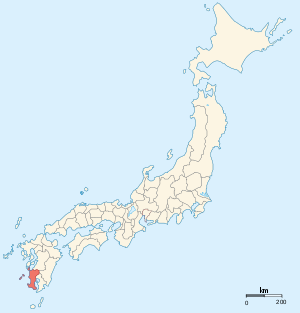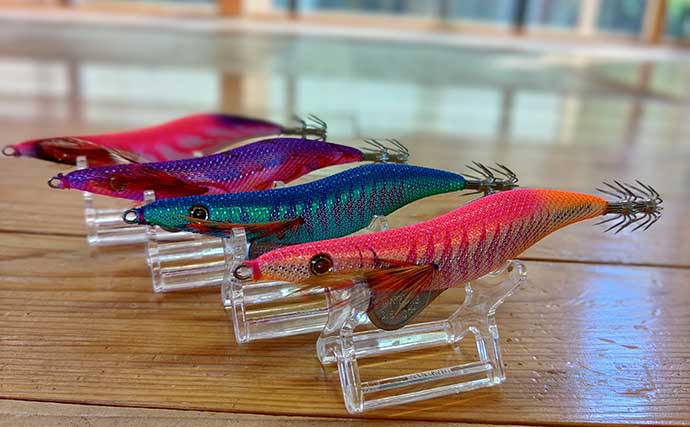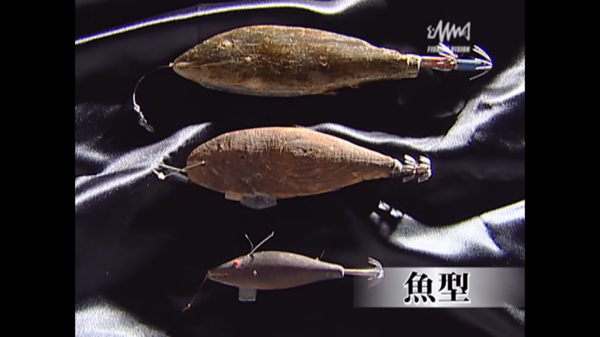Egi, Squid Lure Fishing
One of the most popular targets in SW lure fishing is squids, in Japan.
From the shore, Aori ika (Bigfin reef squid or Green eyed squid, Sepioteuthis) is the favorite one for many anglers.

It is considered as one of the new target species in lure fishing. This squid had grasped lure anglers’ attention in late 90’s. Until then, it was considered to be a target of commercial anglers and very limited people.
Since the southern region of Japan had a richer population of Aori ika, naturally, its origin is from the south or south west area in Japan.
It is said that this squid fishing originates from Satsuma area in Kyushu Island.

However, currently, this Aori ika is spread all over Honshu island. This enhanced the popularity of squid lure fishing in Japan.
Shapes of Egi
Even now, certain shapes of Egi (squid lure) are called by area names of Kyushu. For example, Yamagawa shapes and Oita shapes.
Image of Yamagawa gata (Yamagawa shape)
https://keystonebrand.jp/pages/products/monroegi/imgs/011.jpg

Yamagawa shape has a thin head, and the body is rather thick to have more buoyancy. This shape makes more vertical (like jumping) actions, easily.
Image of Oita gata shape (Oita shape) from
https://tsurinews.jp/data/wp-content/uploads/2022/10/dbd6e98290d8f80118ac728344346577.jpg

Oita shape has a slim body, from head to body. It enables horizontal jerking actions, as well as vertical. While one can adjust actions in Oita shape, such as the diving speed and degree of actions, much easier than Yamagawa shape, it is currently the most popular shape in squid lures.
In terms of shape, there is also another type called Hiki gata (Pull type). This type was designed to be used with only pulling, without jerking the fishing line.
Image of pull type (from https://keystonebrand.jp/pages/products/gotogata/)
https://keystonebrand.jp/pages/products/gotogata/imgs/00.jpg

It has a wider head shape, and it works like a boat’s hull. This shape stabilizes the lure while it is simply pulled.
The beginning of Egi
Some records tell us that Egi for squid emerged around the late half of Edo period (1700’s).
Once, a person on the boat at night was using a torch which left burnt wood into the water. This person accidentally found that a squid was reaching a piece of burnt wood from a torch. Then it brought the idea to get squid with a piece of wood.
Image of early Egi (https://singing-ajinger.hatenablog.com/entry/2018/09/27/091452)
https://cdn-ak.f.st-hatena.com/images/fotolife/a/at0529/20180926/20180926162139.png

At its beginning, Egi did not have any wrapping of cloth, which made it easier for squid to hold onto the body. But, it is imaginable that the rough surface of burnt woods and the surface with bumpy wooden texture worked well, and functioned in the same way as cloth in modern Egi. Since modern Egi is made from plastic, it is necessary to have cloth wrapping. I wonder how it would be like to fish squid with wooden lure. This may be a new way to enjoy it, just like balsa lures in bass fishing?
Catching squid is very different from catching fish.
Squids do not follow and bite, but reach and hold. Their reaction to baits is very different. This Japanese Egi is a well proven method to catch squids, and this method is now getting popular in many areas globally.

One thought on “Egi, Squid Lure Fishing”